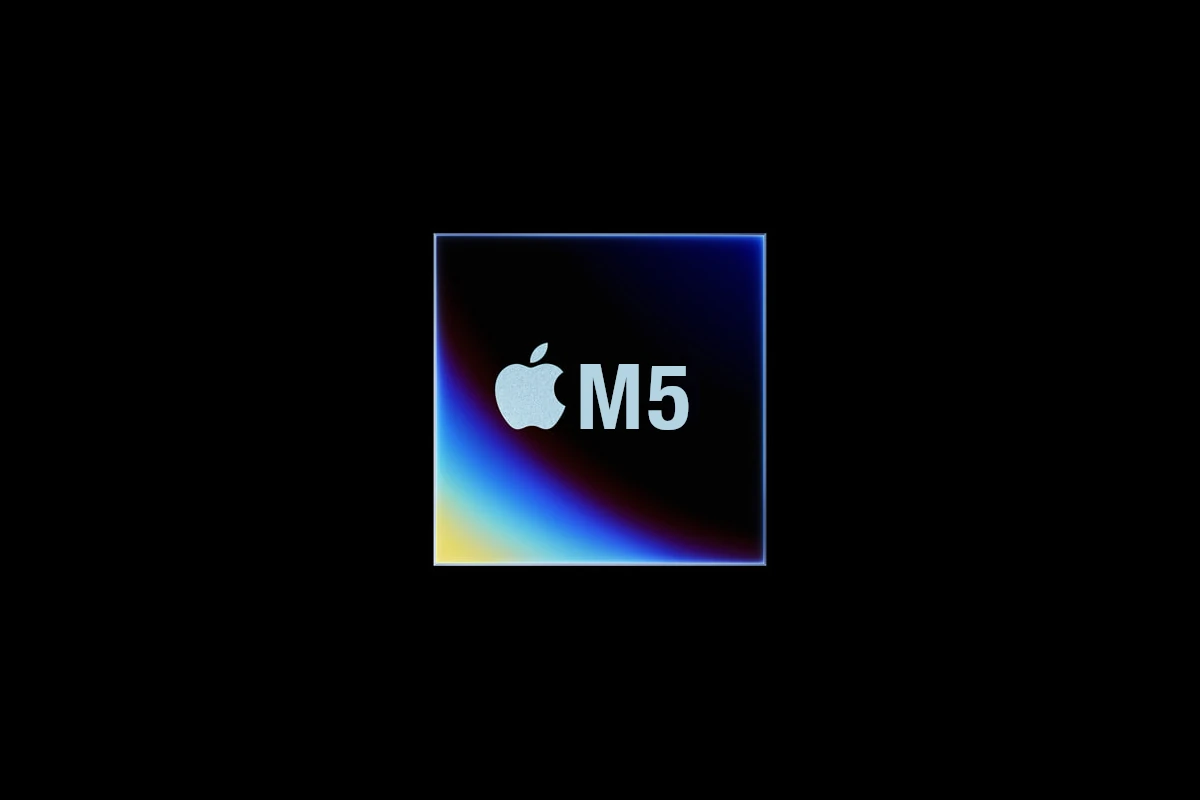Apple is currently working on the M5 chip and there are a lot of high expectations and hopes for the processor – especially when it comes to Ai performance. Every generation of M series processor comes with its own advancements in speed, power, and capabilities. This chip will likely add a new performance category to that list in the area of Ai processing that we will look at from now on.
The M5 chip is expected to be released in mid-2025, bringing with it a new generation of M5 Mac and M5 MacBooks that will set new industry standards. Rumored to be the first chip featuring 2-nanometer technology, the M5 chip could bring significant performance and efficiency improvements compared to the 3-nanometer technology used in the M3 and M4 chips. The upcoming M5 upgrades are expected to include specialized AI features, making Apple computers smarter and faster than ever before.

There will be several different versions of the M5, such as the Pro Max and Ultra models; each of those revisions will cater to various needs and devices. It’s most likely that we’ll see the Mac lineup refreshed with the M5 chip first, but an upgraded iPad Pro is also a possibility. The only issue with that, however, is the M4 Pro just launched in May 2024. Could we finally see an iPad Ultra powered by the M5 chip? Apple hasn’t said anything about that yet but that would definitely be a big deal. It is speculated that the M5 chip might be used in consumer devices as well as AI servers and could be a big part of Apple’s push into Apple’s On-Device and Server Foundation Models & Apple Intelligence.
Powering the Future: Apple’s M5 Chip – What We Know So Far
Expected Release Date and Pricing
Apple’s M5 chip is not expected until mid-2025, potentially in May or June, following the pattern of previous releases. However, mass production of AI server chips using the M5 may not start until the second half of 2025, suggesting a later release for devices using the M5. Pricing is expected to remain consistent with current M4 devices.
Potential Variants
Based on Apple’s history, four variants of the M5 chip are expected:
- M5: The base model, likely to debut first in the iPad Pro.
- M5 Pro: A more powerful variant for professional users.
- M5 Max: An even higher-performance version for demanding tasks.
- M5 Ultra: The most powerful chip in the lineup, combining two M5 Max chips for extreme performance.
Expected Devices
Here are some device possibilities that the M5 chip could be installed in for all new product releases:
| Device Category | Potential Models |
|---|---|
| MacBook | MacBook Air, MacBook Pro (13-inch, 14-inch, 16-inch) |
| iMac | iMac (24-inch), iMac Pro |
| Mac mini | Mac mini |
| Mac Studio | Mac Studio |
| Mac Pro | Mac Pro |
The AI revolution may necessitate increased base specs for Macs, such as more RAM and storage.
And if Apple decides to shorten the iPad Pro release cycle (or possibly introduct the iPad Ultra) we could see the M5 chips in tablets:
| Model | Chip |
|---|---|
| 11-inch iPad Pro or Ultra (Wi-Fi) | M5 |
| 11-inch iPad Pro or Ultra (Cellular) | M5 |
| 13-inch iPad Pro or Ultra (Wi-Fi) | M5 |
| 13-inch iPad Pro or Ultra (Cellular) | M5 |
Other devices are possible if Apple expands into new lines in 2025 and beyond.
Specs and Performance
While exact specs remain unknown, the M5 chip is rumored to be the first to use TSMC’s 2nm process technology, which will improve performance and power efficiency. It’s expected to have a more powerful Neural Engine than the M4 for enhanced AI capabilities.
AI Features
Apple is focusing on AI advancements, and the M5 chip is expected to reflect this with improved AI performance. The chip is rumored to utilize advanced packaging technology for a strategic approach to AI capabilities across devices.
Apple’s Neural Engine in the M4 chip currently delivers up to 38 trillion operations per second, 60 times faster than its first Neural Engine. The M5 chip will blow these numbers out of the water.
Outlook
While the M5 chip is still in development, the rumors and leaks indicate a significant leap in performance and efficiency. The M5 chip’s potential impact on Apple devices and AI applications is substantial, and its release is eagerly anticipated.
Apple might launch all its M5 chip variants simultaneously, similar to the M3 series release.
Ai Servers
The M5 chip will power both consumer Macs and AI cloud servers, showing Apple’s strategy to integrate AI functionality across its products. Currently, Apple’s AI cloud servers use multiple connected M2 Ultra chips. In the future, AI servers will use M4 chips starting in late 2025. The industry is still deciding how to balance on-device and server-side AI processing for efficiency and privacy.
Apple competes with companies like AWS and Nvidia in the AI server market. Although Apple continues offering solutions like the Mac mini for server use cases, it faces challenges from established players like Google, Facebook, Amazon, and Microsoft. Apple’s advantages include custom silicon and expertise in user-centric design and software. The M5 chips may be used in AI servers sooner than expected, with mass production potentially starting in the second half of 2025. This would future-proof Apple’s plan to integrate AI across computers, cloud servers, and software.
Rumored Features & Specifications
- System on Integrated Chip (SoIC) Technology: The M5 chip will utilize TSMC’s SoIC technology, enabling 3D chip stacking for improved performance and thermal management. The M5 chip’s advanced SOIC packaging could signal Apple’s strategy to expand into both AI PCs and cloud AI applications.
- Hybrid SoIC Package: Apple is collaborating with TSMC on a next-generation hybrid SoIC package incorporating thermoplastic carbon fiber composite molding technology. Apple is likely to use TSMC’s SoIC-P technology, known for its efficiency, over SoIC-X.
- Mass Production Timeline: Mass production of the M5 chip for Macs and AI cloud servers is expected in 2025 and 2026.
- Market Position: The M5 chip aims to compete with Nvidia’s H100 and Blackwell chips in the AI server market.
- Memory Configurations: The M4 base model may have only 3 P-cores, and future models could see a shift towards 12GB as the base RAM option.
Key Takeaways
- The M5 chip promises big gains in speed and power for Apple devices
- Advanced packaging may boost the M5’s performance beyond current chips
- Apple is developing multiple M5 versions to suit different needs
Evolution and Architecture
Apple’s M5 chip marks a big leap in chip design. It builds on past M-series chips but adds new features for AI and better performance.
Design and Fabrication
The M5 chip is rumored to be using TSMC and a 2nm process. This lets Apple pack more transistors into a smaller space. The result is a faster chip that uses less power. Apple may use a new packaging method called SoIC for the M5. This could boost speed and energy efficiency even more.
The M5 might use new materials too. One rumor points to a special carbon fiber composite. This could help keep the chip cool while it works hard.
Comparative Analysis with Previous Generations
The M5 chip is set to outdo the M4 in many ways. It will likely have more CPU and GPU cores. This means faster processing and better graphics.
AI tasks are a big focus for the M5. It may have special parts just for AI work. This could make Macs much better at things like image editing and voice recognition.
Power use is also key. The M5 should use less energy than older chips while doing more work. This means longer battery life in laptops and less heat in desktops.
Application and Integration
Apple’s M5 chip aims to boost performance in Macs and AI servers. This new technology will impact Apple’s product line and enhance AI and cloud computing capabilities.
Impact on Apple’s Product Line
The M5 chip will likely power future Macs. It may bring faster speeds and better energy use to laptops and desktops. Users could see smoother graphics and quicker app launches.
Apple might add new AI features to its devices with the M5 chip. These could include smarter photo editing tools or more advanced voice assistants. The chip’s power might also allow for better gaming on Macs.
Some Macs may get bigger performance jumps than others. High-end models like the Mac Pro could see the biggest gains. Entry-level Macs might get smaller but still noticeable upgrades.
Performance in AI and Cloud Computing
The M5 chip is set to power AI servers too. This move could help Apple improve its cloud services. Users might see faster Siri responses and better iCloud performance.
Apple may use the M5 to run large AI models. This could lead to new AI tools for developers and users. Tasks like language translation or image creation might become quicker and more accurate.
The chip’s design might allow for more efficient data centers. This could mean Apple needs fewer servers to do the same work. It may also help cut energy use in Apple’s cloud operations.
With the M5 Apple could offer stronger AI features without sending data off-device. This might improve privacy and speed for users of Apple services.







